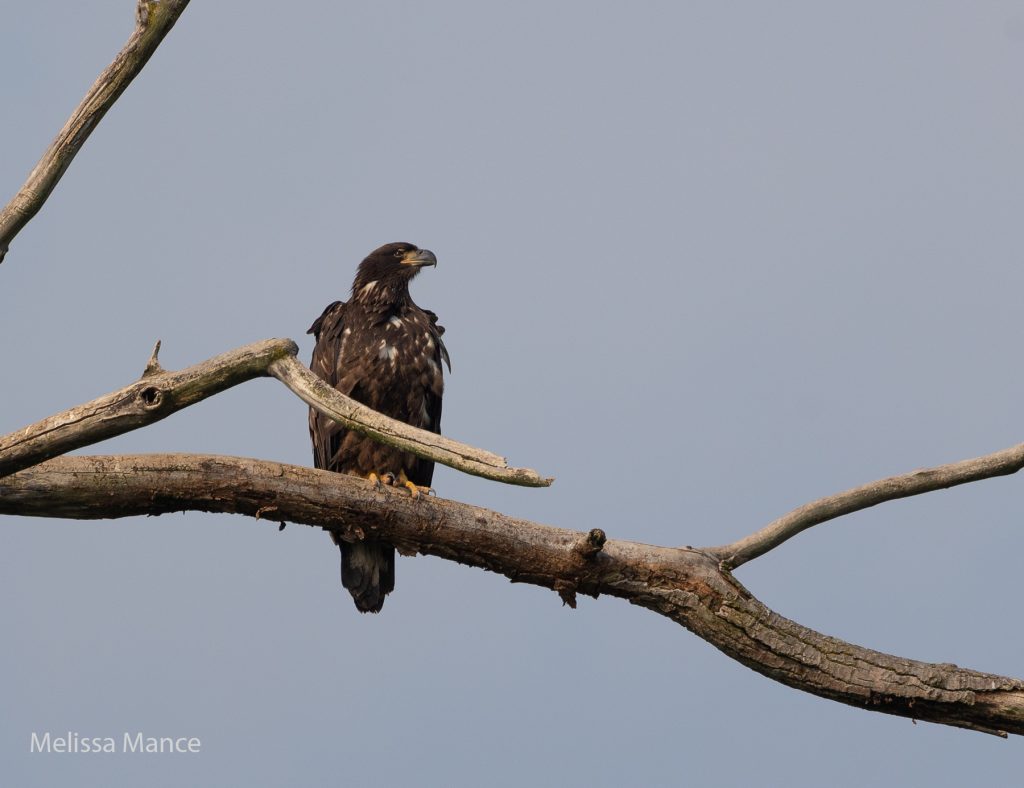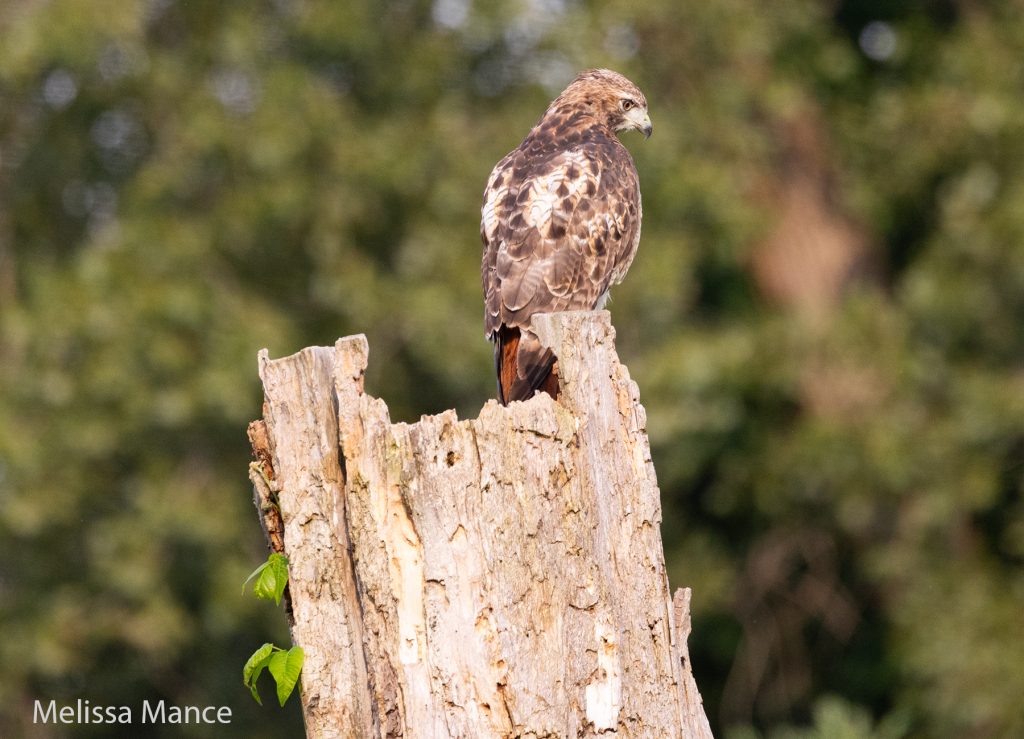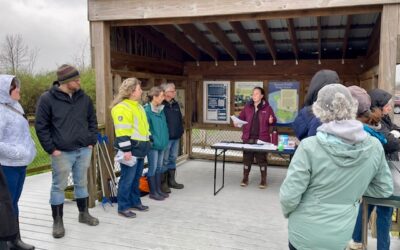
Fierce and fully adapted to being a predator on the wing, raptors or birds of prey rule the skies. Diurnal raptors hunt during daylight hours and consist of hawks, falcons and eagles. Nocturnal raptors are in the owl family and have many of the same characteristics of diurnal raptors.
Birds of prey have evolved to have sharp talons for killing and grasping prey. They have a large hallux (back toe) that gives them some serious gripping strength. That hallux has a sharp and deadly talon along with their three front toes. Most diurnal raptors have un-feathered tarsi (legs) except for eagles, ferruginous hawks and rough-legged hawks. The feet of birds of prey are their primary means for catching and securing prey. According to raptorsource.org bald eagles usually grab prey that is around 3-4 lbs., which is one-third of their body weight.
The largest North American raptor is the golden eagle, which weighs in at around 7-13 lbs. The smallest North American raptor is the American kestrel which weighs in at a whopping 4 ounces. Birds of prey have sexual dimorphism which means that the females are around 30 percent larger than the males, depending on the species of raptor. There is an overlap in size with red-tailed hawks and some other raptors, but generally the females are more powerful and larger. This is because the females are the primary nest defenders, and they sacrifice maneuverability to be able to defend the young and eggs. Often the males are the prey providers when raising their young. Birds of prey have sharp, curved beaks used to rip and tear prey. They also have amazing eyesight to help them spot their prey from great distances.

Hawks have three primary families at Iroquois National Wildlife Refuge. The big soaring buteo (red-tailed hawks, rough-legged hawks and red-shouldered hawks) and the agile forest dwelling accipiter (Cooper’s hawks, sharp-shinned hawks, and American goshawks). Accipiters are known for their speed and stealth. They have longer tails and more agility than the larger buteos. They use this to zip through the trees and grab their primary prey – other birds. Northern harriers fit into their own sub-family of Circinae, named for their circling flight. They are the most owl-like hawks in the refuge, and they prefer to hunt at dusk and dawn. You can see them flying over the marshes of the refuge. Look for their signature white rump-patch and the backwards V of their wings as they fly.
Bald eagles are a familiar sight on the refuge with their white heads and tails. They soar with a wingspan of up to 6 feet from wingtip to wingtip. Bald eagles have an amazing courtship, where they grab each other’s talons and spin down to the ground. They release each other right before they crash to the ground! Another member of the eagle family is the osprey. When they return from their wintering grounds, they can be seen hover-hunting the waterways for fish. Osprey are almost exclusively fish eaters and have a special adaptation to their eyes that allows them to see into the depths of the water to spot prey.

The refuge hosts three falcon species, the American kestrel, merlin and the peregrine falcon. The peregrine falcon has been clocked at speeds of up to 240 miles per hour on a dive. They can be found hunting the marshes during fall and spring migration. American kestrels are the smallest North American falcon, and you can often find them hunting on powerlines throughout the refuge. They like to prey upon small mammals and insects. Merlin tend to hang-out during the winter months. They love to hunt from the top of power poles and catch small birds and mammals.
The next time you take a walk on the refuge, look for these apex predators. A healthy raptor population indicates a healthy ecosystem. Look upwards on warm days for hawks soaring on the thermals, watch over the marshes for the fastest bird on earth, the peregrine falcon as they dive for prey and see northern harriers with their dancing flight at sunset hunting the marshland.
By Melissa Mance-Coniglio






